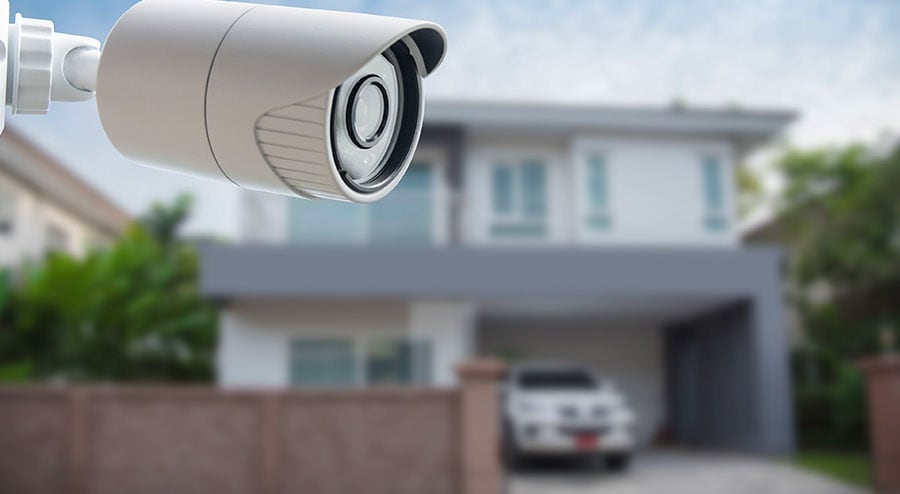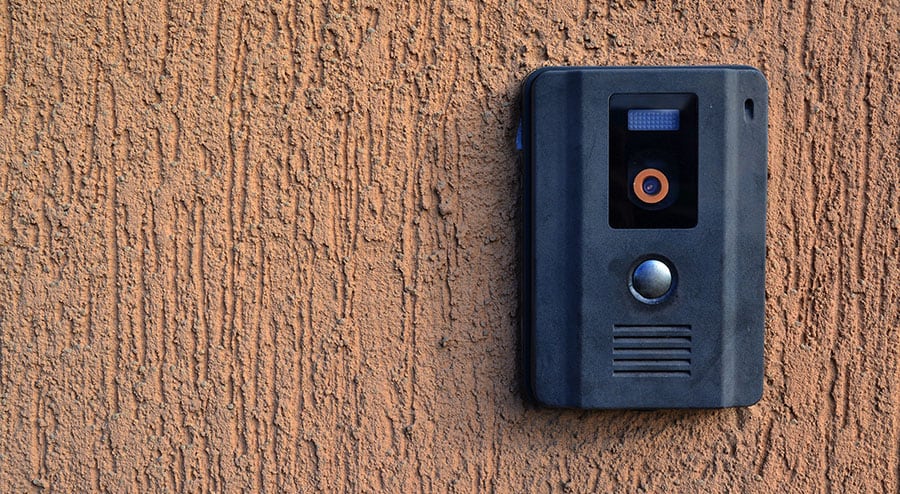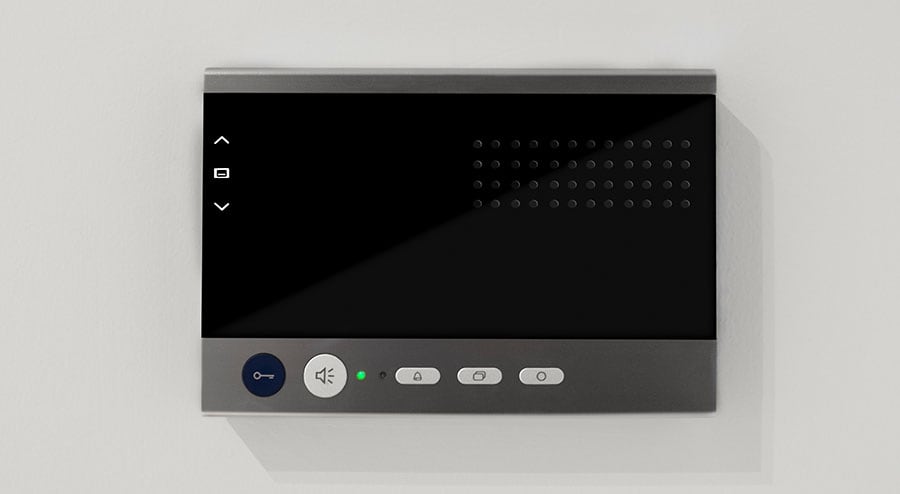The front door to your home is intended to be an appealing place that adds to the curb value of your property. It is supposed to display an inviting and welcoming space. The door is symbolic of how the inside of your home is a great place in which to live.
However, you must look carefully at how well your front door is protected against burglars. Look at things like the strike plate, the strength of the door frame, the door jamb, and the door handle. However, one of the most important features is, of course, the exterior door locks. One of the greatest concerns that people have with their front doors is that they are not reinforced or secured well enough because of the locks. A door with a weak lock might be easy for anyone to break down. Therefore, you must consider the quality of the door lock. Consider the type of lock. Would you prefer a smart lock, a multi-point lock, a cylinder lock, or a deadbolt lock? They are all important factors to consider.
Your front door, as well as other exterior doors, is a prime location for criminals to break into your home. Someone might try to tear down your door or break its locks apart. The worst case might be when the locks are loose and far too easy to pull open.
The risk to your front door is real, but you can keep it protected if you have the best front door locks possible. There are numerous security tips you can use to keep your door locks strong and secure.
Grade 1 or 2 Deadbolt?
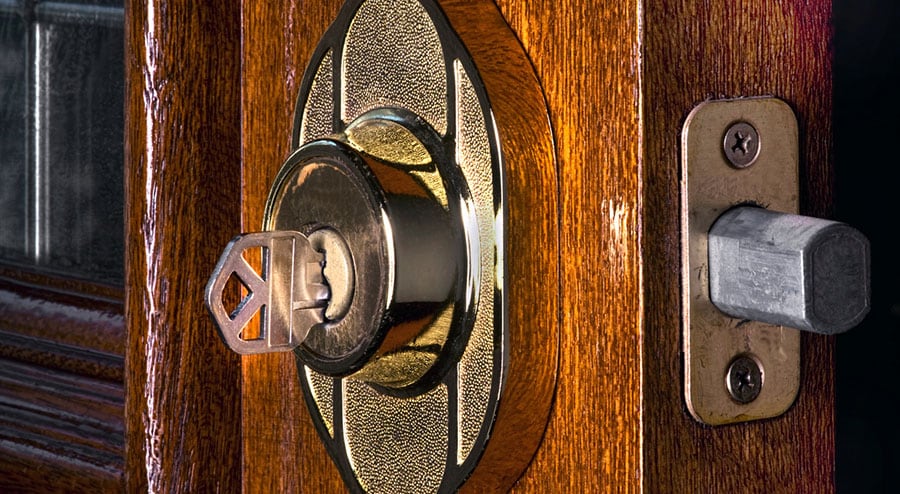
One thing you might notice when looking at front door locks entails the grade on your deadbolt. You will notice Grade 1 and Grade 2 deadbolts when you are looking for quality locks.
A Grade 1 deadbolt is best for when you need a model that is stronger and lasts for a long time. A Grade 1 model offers more torque per swing than a Grade 2 model. This should be powerful enough to handle daily opening and closing without a hitch.
Look for a Grade 1 deadbolt for your front door if you do not have one. The bolt is easy to use thanks to how they have has a little more strength than most other models on the market.
Test The Latch Bar
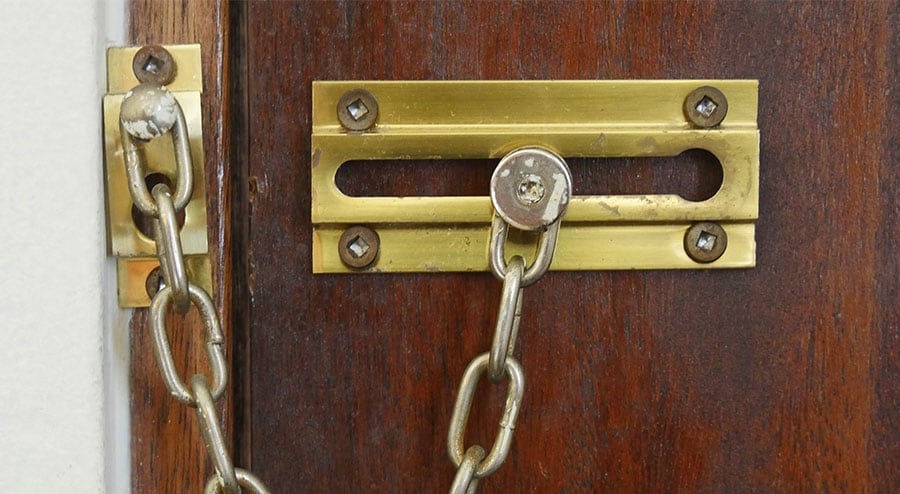
The latch on your door should be tested regularly. It needs to move in and out of the door without problems. You might have to look to see if there are any issues with the way how the latch moves.
You could sand down any surfaces around your door that might be getting in the way of the latch. You might even have to readjust how the latch is positioned inside your door by shifting the positioning of the latch according to how the rest of the door is laid out. This would involve unscrewing the outside part and then secure it back in place after making a few slight adjustments. This is a simple option for repair, but it can work well if treated with care.
Review The Exterior Screws If You Have Them
Look at the exterior screws on your front door lock if you have any. Make sure they are tight and secured well. They should not be easy to pull out. Replace any screws that are sticking out that might be far too easy to open up.
Consider No Exterior Screws
You could always look for a front door lock that does not feature any exterior screws. An exit-only door lock is a model that does not have any screws on the outside part. The screws are secured on the inside as you install the lock from that side.
The base of the lock would be larger on the inside section than it would on the outside. The only thing you need to get out of the outside section of the lock is a large enough hole to allow the keyhole to be visible.
As this lock option works, you will keep the door from potentially being left vulnerable to someone who might try to screw the lock open. Your door should be designed to where it becomes harder for the door to be broken into.
Add Reinforcing Bars To The Lock

Some advanced locks might come with reinforcing bars. These are sturdy bars that stretch the width of your door. They may link up to a lock to add an extra barrier of protection. This would help by creating a thick surface where the door will be harder to break apart.
Consider A Keypad
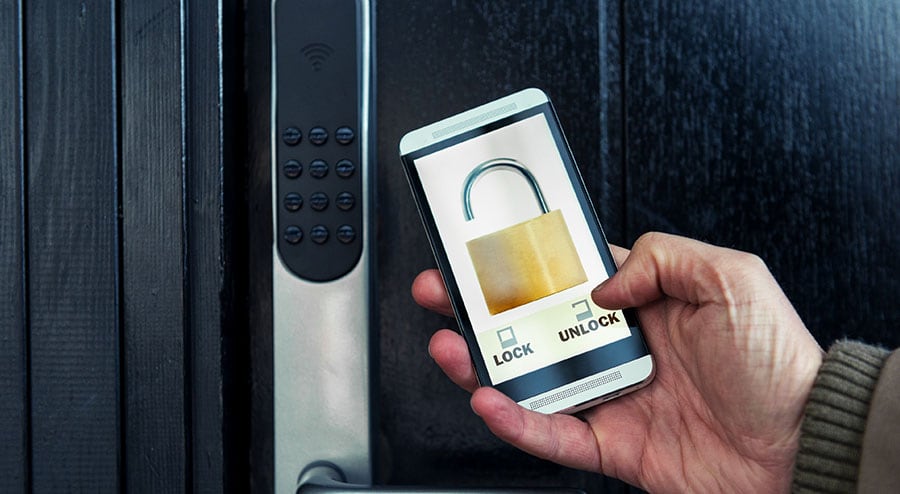
You could always use a keypad-based system for your lock to create a stronger and more useful setup for getting into your door. This would involve the use of a pad that you enter a number into. By entering that number, you can unlock the door and get into your home.
This would use a simple layout that you can program yourself. You could even use this to program temporary codes that last for a short time. Some models even come with security features that lock the user out if the person does not get the right combination within a certain number of attempts. This keeps people from potentially trying to enter in random numbers just to unlock the door.
But you should look at how a physical key-based feature might be included alongside your keypad. This might include a small override section on your pad that lets you manually open the door if the battery inside the keypad is not working or has run out of power.
What Is The Door Made Out Of?
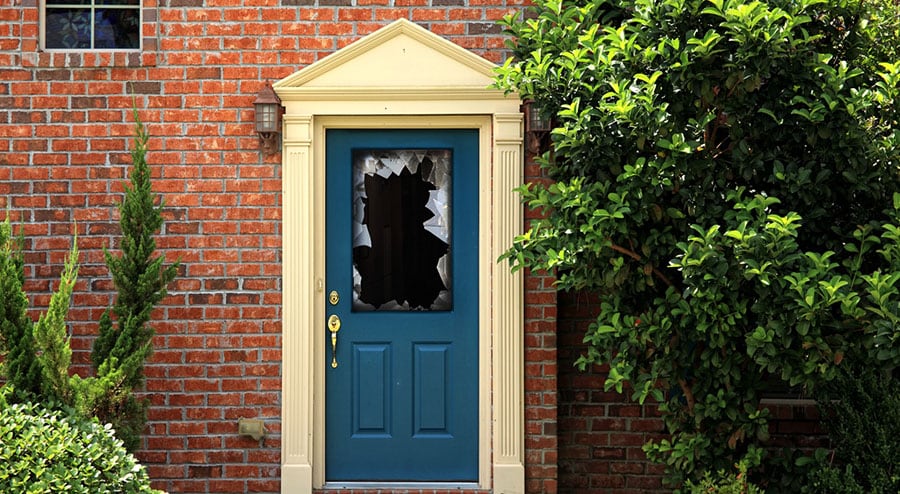
The materials that your door is made out of will make an impact on the quality of the lock. Many locks can become loose if they are on doors with hollow cores. This comes from how the open nature of the door might not include enough features to secure the anchor for the lock.
A solid door is a better choice as it creates a sturdier and safer surface for use. It should be dense and contain a more solid material on the inside. It would also be harder to break down although reinforcing bars can still be drilled into the door as they link up to your lock if you choose to add them.
A solid door is made of metal or fiberglass although solid wood materials can work too. This kind of door is a little heavier than most others, but it will stay strong and not break apart easily.
Review The Springs
The springs on your locks must be tested every once in a while. A spring is responsible for triggering the motion that lets a lock get up and ready to use. Sometimes, a spring might wear out and not be as strong as it normally would be. You would have to replace the spring on a lock as needed.
Clean Out The Bolt
The bolt that links up to your key might become dirty after a lot of use. This is from all the stress that the bolt goes through and how a key might add too much pressure to it. The added force might be rather tough for the bolt to handle after a while, thus being hard on the door in general.
Take apart your lock and clean off the bolt mechanism. Clean out any dirt or other items that might have got into it. This helps to not only make it easier for you to access your home but to also improve on how well the lock can work with regards to its other parts. A cleaned-out bolt will not be at risk of shifting or causing disruptions to other parts of the lock. Also, the bolt will be easier to close.
Check The Faceplate
Sometimes, the faceplate might not be working as it should. As your home ages, it becomes easier for the faceplate and other parts of the door to shift. This comes from the wood materials around the faceplate wearing out. The weather conditions in your space might make it easier for the door to wear out and weaken. But by replacing or fixing up your faceplate, it becomes easier for this part of the door to become secure again.
Rekey The Lock On Occasion
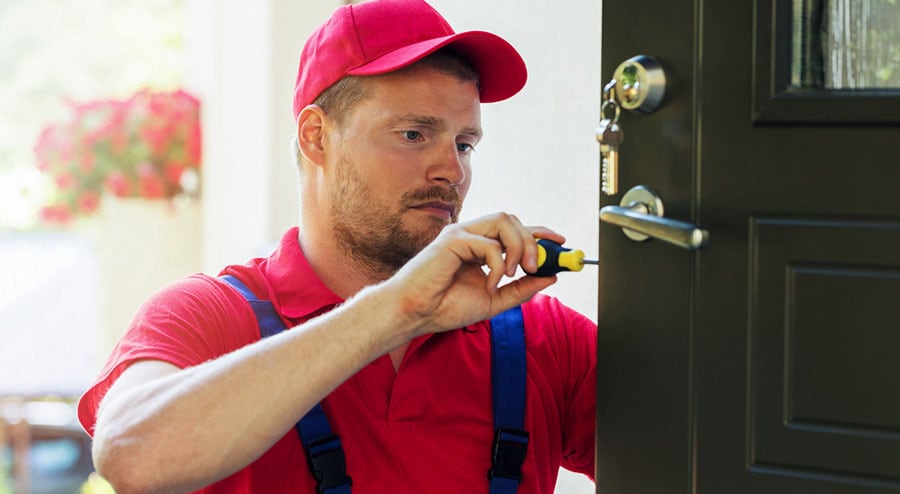
The last tip to use is to rekey your lock every once in a while. This is often a useful solution for keeping your door safe as you can get the key layout on your door replaced with something new.
A locksmith could help by taking out your old locking mechanism and installing a new one that requires a different key shape for it to work properly. A full replacement can be done once a year if desired. The service lets you keep the door lock clean while also keeping the door from being too easy for a person to figure out how to open it.
Be aware of what you are getting out of your front door locks. Look at how well your plan for producing fine locks is working and see that you are getting the best possible solutions ready for your security needs. Above all, buy the very best locks that you can afford. Most quality locks require the least maintenance and they will provide the very best protection against intruders should anyone ever try to break into your family home.


